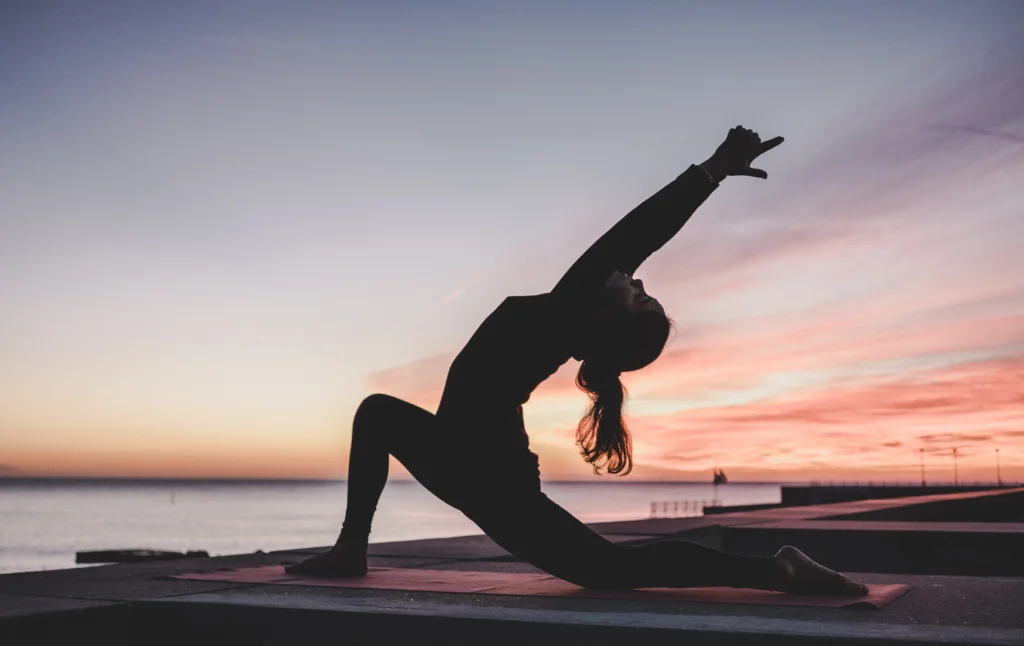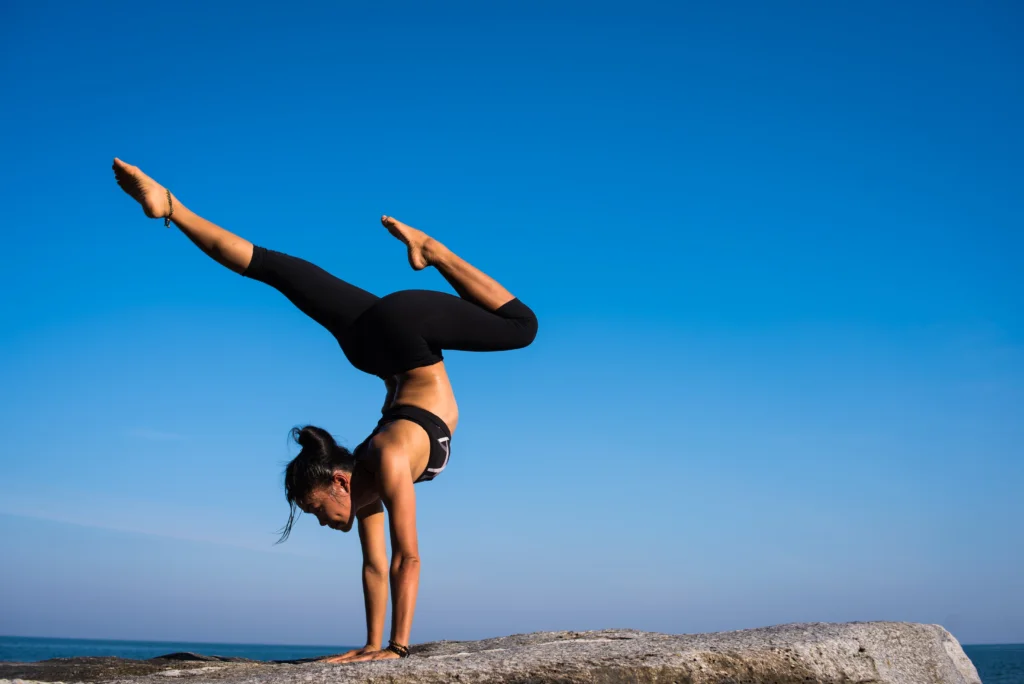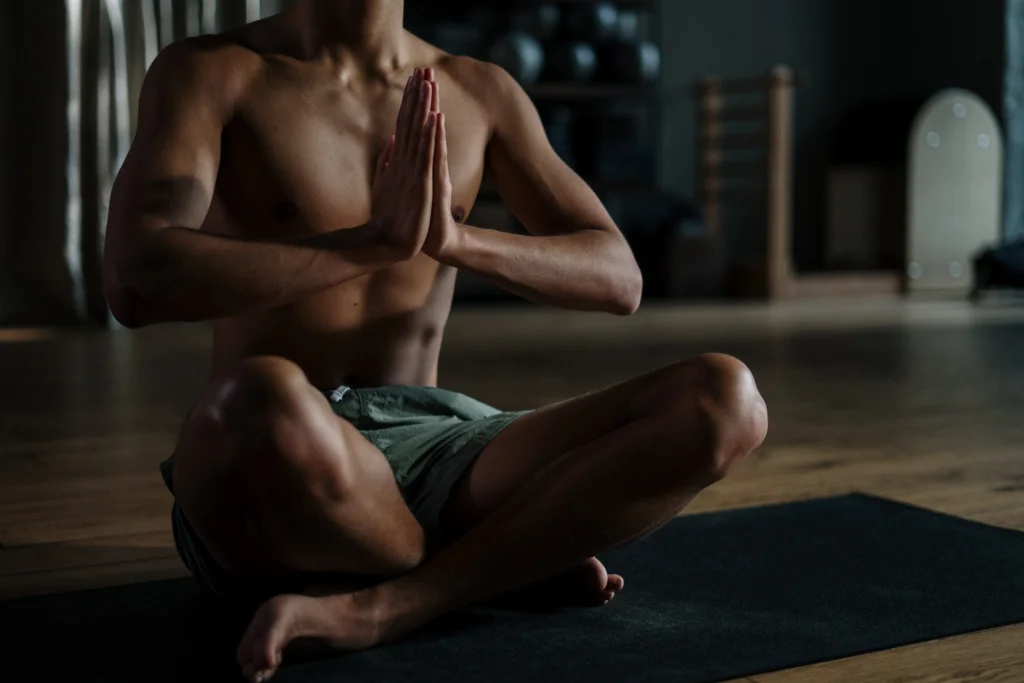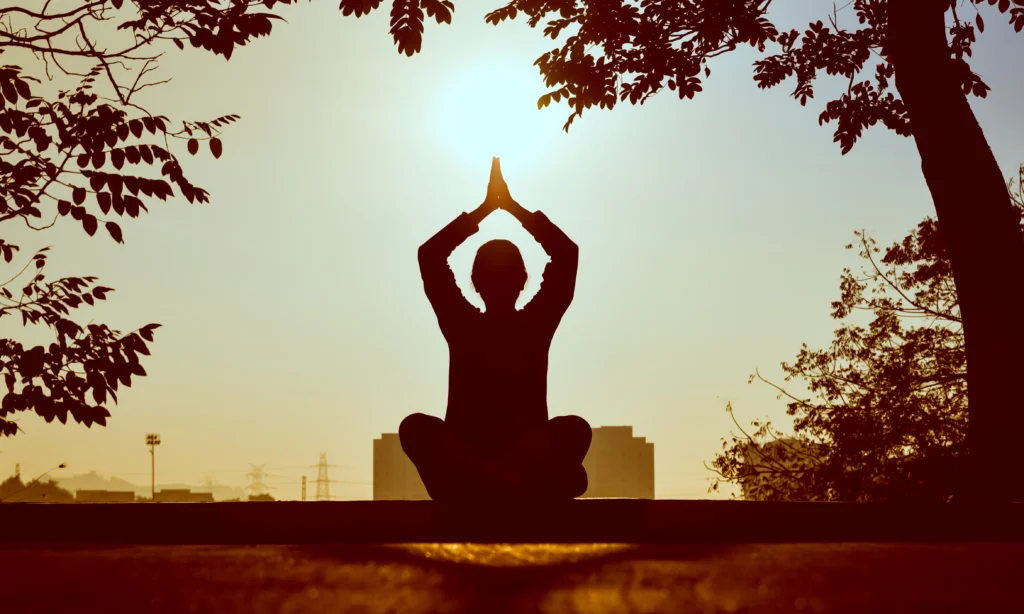Yoga & Pilates
Unveiling the Mysteries of Yoga: Exploring 6 of the Most Practiced Styles for Ultimate Mind and Body Wellness

Introduction
Yoga is an ancient practice that originated in India over 5,000 years ago. It is a combination of physical, mental, and spiritual practices designed to promote overall health and well-being.
The practice of yoga has become increasingly popular in Western countries, with millions of people practicing it daily. One reason for this popularity is the incredible variety of yoga styles available today.
Each style has its own unique benefits, making it accessible to people from all walks of life. Yoga has numerous benefits for both physical and mental health.
It can help improve flexibility, strength, balance, and posture. Additionally, it can help reduce stress and anxiety levels while improving overall mental clarity and focus.
Of all the different styles of yoga available today, Hatha yoga is the most commonly practiced. Hatha yoga focuses on physical postures (asanas) and breathing techniques (pranayama).
This makes it accessible to people of all ages and fitness levels, as it emphasizes holding postures for a longer period rather than flowing through poses quickly.
Hatha Yoga is an excellent practice for beginners, providing an excellent foundation for other practices such as Vinyasa or Ashtanga Yoga.
In this article, we will explore some of the most popular styles of yoga in more detail so that you can determine which style may be right for you!
Table of Contents
Hatha Yoga

The Definition and Origin of Hatha Yoga
Hatha yoga is the most widely practiced yoga style in the Western world. The word “Hatha” is a combination of two Sanskrit words, “Ha,” which means sun, and “Tha,” which means moon. Hatha yoga, therefore, aims to balance the opposing forces within us, such as light and dark or active and passive.
The origins of Hatha yoga can be traced back to the 15th-century Indian sage Yogi Swatmarama, who wrote the text Hatha Pradipika. This text is considered a definitive manual on physical practice by many yogis.
Physical Postures (Asanas) and Breathing Techniques (Pranayama)
Physical postures, or asanas, are an essential part of Hatha yoga. These postures are designed to stretch and strengthen muscles and improve flexibility and balance while also promoting relaxation.
Breathing techniques, or pranayama, used in Hatha yoga aim at balancing energy levels in the body while also calming down our minds. The most popular pranayama technique used in Hatha yoga is Ujjayi breath, which produces a hissing sound during inhalation and exhalation.
Benefits for Flexibility, Strength, and Stress Relief
The benefits of practicing Hatha Yoga are numerous; it improves flexibility by stretching muscles evenly across joints, leading to improved mobility. Practicing this style regularly can also increase strength through holding poses for longer periods.
Hath Yoga’s slow-paced movements, coupled with deep breathing exercises, have been found effective in reducing stress levels by calming the mind while improving focus and concentration. It can also help alleviate various physical issues such as backaches, joint pains, and headaches.
Practicing hatha yoga for 30–60 minutes daily can significantly improve your overall physical and mental health.
It is an excellent style for beginners or anyone looking for a more gentle practice that focuses on relaxation, stress relief, and improved flexibility.
Vinyasa Yoga: Flowing Your Way to Better Health

Vinyasa yoga is a dynamic form of yoga that emphasizes the connection between breath and movement. It is sometimes referred to as “flow yoga” or “vinyasa flow” because of the flowing sequences of movements synchronized with breath.
The word “vinyasa” means “to place in a special way,” which reflects the intention behind the practice: to create a mindful, moving meditation that promotes physical and mental well-being.
The origins of Vinyasa Yoga can be traced back to the ancient tradition of Hatha Yoga, which includes physical postures (asanas) and breathing techniques (pranayama). In Vinyasa Yoga, these elements are combined into a fluid sequence of movements that can vary in intensity and difficulty.
The practice often begins with sun salutations, which warm up the body and prepare it for more challenging poses.
One of the main benefits of Vinyasa yoga is its ability to improve cardiovascular health and endurance.
The continuous movement linked to breath increases heart rate and strengthens lung function, making it an excellent form of exercise for those looking to improve their overall fitness level.
Additionally, the focus on mindfulness promotes mental clarity and reduces stress levels, leading to an overall sense of well-being.
Another key aspect of Vinyasa yoga is its adaptability. Because there is no set sequence or structure, teachers have the flexibility to create classes that cater to different levels of experience and ability.
This makes it accessible for beginners while still offering challenges for more advanced practitioners.
Ashtanga Yoga: A Dynamic and Disciplined Practice

Ashtanga yoga is a popular style of yoga that is known for its dynamic and rigorous approach.
This style of yoga was developed by Sri K. Pattabhi Jois in the early 20th century in Mysore, India.
The word “ashtanga” means eight limbs, which refers to the eight-fold path of yoga as described in ancient yogic texts.
Ashtanga Yoga focuses on a fixed sequence of postures with specific breathing techniques known as vinyasas.
The practice of Ashtanga Yoga begins with the Sun Salutation A and B sequences, followed by a series of standing poses, seated poses, backbends, and inversions. Each pose is held for five breaths before moving on to the next.
The practice concludes with a series of closing postures and a final relaxation pose.
One unique aspect of Ashtanga yoga is that it follows a set sequence of postures that are practiced in the same order every time.
This allows practitioners to develop consistency and discipline in their practice while also allowing them to gauge their progress over time as they work towards mastering each pose.
The continuous movement from one posture to another helps to improve cardiovascular health while also increasing endurance and stamina.
Additionally, practicing Ashtanga yoga can help cultivate focus, discipline, and mental clarity through synchronized movement with breath.
Overall, Ashtanga Yoga is an excellent choice for practitioners who enjoy a dynamic and disciplined practice that encourages physical strength, flexibility, mental focus, and personal growth through consistent effort over time.
It can be challenging but also deeply rewarding for those who are willing to commit themselves to this powerful style of yoga practice.
Bikram Yoga: A Heated Practice

Bikram yoga is a type of hot yoga that involves practicing a set sequence of 26 postures in a heated room. The name “Bikram” comes from its founder, Bikram Choudhury, who developed the practice in the 1970s.
The room is typically heated to around 105 degrees Fahrenheit with a humidity level of around 40%, creating a challenging and sweat-inducing environment.
The practice has been controversial due to allegations of sexual harassment and misconduct by Choudhury, but Bikram yoga continues to be popular among many practitioners for its intense physical challenge and potential health benefits.
26 Postures in a Heated Room
The sequence of postures in Bikram yoga is designed to work every part of the body, from head to toe. Each pose is held for a specific amount of time, with precise instructions on alignment and breathing. The series begins with standing postures before moving on to seated poses, backbends, and inversions.
One unique aspect of Bikram yoga is that it is always practiced in the same order, allowing practitioners to observe progress over time as they become more familiar with the sequence.
Additionally, all Bikram classes are led by certified teachers who have completed an intensive training program.
Benefits for Detoxification, Weight Loss, and Joint Mobility
The heat and humidity of Bikram yoga can help facilitate detoxification by promoting sweating and increased circulation. This can lead to clearer skin, improved digestion, and a sense of revitalization after class.
Some practitioners report weight loss as a result of practicing Bikram regularly. The intensity of the practice, combined with the high temperature, burns calories and can help increase metabolism.
The series includes many postures that focus on joint mobility and flexibility. Practicing these poses regularly can help alleviate stiffness and pain, leading to increased mobility and overall comfort.
Is Bikram Yoga Right for You?
While Bikram yoga can be a challenging and rewarding practice, it may not be suitable for everyone.
The high temperature and intensity of the class can be overwhelming for some people, particularly those with certain medical conditions or who are pregnant. It’s important to consult with a doctor before starting any new exercise program to ensure that it is safe for your individual needs.
If you do decide to try Bikram yoga, be sure to listen to your body and take breaks as needed. With regular practice, you may find that this heated style of yoga offers numerous physical and mental benefits.
Kundalini Yoga

Definition & Origin
Kundalini Yoga is a spiritual and physical practice that aims to awaken the energy at the base of the spine, also known as Kundalini. This practice originated in ancient India and was brought to the West by Yogi Bhajan in the late 1960s.
It combines physical postures (asanas), breathing techniques (pranayama), meditation, and chanting to activate and balance the chakras.
In Kundalini Yoga, the focus is on releasing blockages in the body’s energy channels and allowing Kundalini energy to flow freely through them.
This results in a heightened state of awareness, spiritual growth, and increased vitality. Kundalini yoga is often described as a powerful tool for transformation and self-discovery.
Awakening Energy Through Meditation & Chanting
One of the unique aspects of Kundalini yoga is its emphasis on meditation and chanting as tools for awakening Kundalini energy.
These practices help to quieten the mind and bring awareness to our inner selves. The use of mantras (repeated phrases or words) during chanting also helps to stimulate specific chakras and connect us with their energies.
Kriyas, a series of specific exercises that work on different areas of the body, are also an integral part of Kundalini Yoga practice. These exercises often involve repetitive movements or holding poses for extended periods while focusing on breathwork.
Benefits: Emotional Balance & Spiritual Growth
The benefits of practicing Kundalini yoga are numerous. One significant advantage is emotional balance.
By working directly with our energy centers, we can release pent-up emotions that may be causing stress or anxiety in our lives. This can lead to greater emotional stability and resilience.
Additionally, regular practice can lead to spiritual growth by connecting us with our inner selves and the divine. Kundalini Yoga has been known to increase intuition, creativity, and empathy.
Some practitioners report experiencing a state of bliss or euphoria after a particularly profound practice. Kundalini yoga is a powerful and transformative practice that benefits physical and emotional well-being.
It provides a unique approach to yoga that emphasizes the spiritual aspect of the practice. With regular practice, one can experience increased vitality, heightened awareness, and improved overall health.
Restorative Yoga

When it comes to yoga, many people think of challenging poses that require strength and flexibility. However, restorative yoga takes a different approach.
This style of yoga is all about relaxation and healing. In this section, we’ll explore what restorative yoga is, where it comes from, and its benefits.
Definition & Origin
Restorative yoga is a gentle form of yoga that focuses on relaxation and rejuvenation. It involves using props like blankets, bolsters, and blocks to support the body in various poses.
These poses are held for several minutes at a time, allowing the body to fully relax and release tension.
The origins of restorative yoga can be traced back to B.K.S. Iyengar’s style of hatha yoga. Iyengar was known for his attention to detail and use of props in his practice.
Over time, teachers began to develop their own variations of restorative poses based on Iyengar’s teachings.
Gentle Poses Held for Long Periods
Restorative poses are typically very gentle and easy on the body. Some common examples include the supported child’s pose, the reclined bound angle pose, and the supported bridge pose. These poses are designed to be held for several minutes or even longer.
Restorative poses are typically very gentle and easy on the body. Some common examples include:
- Supported child’s pose
- Reclined bound angle pose
- Supported bridge pose
These poses are designed to be held for several minutes or even longer.
The long hold times allow the muscles to release tension and the mind to quiet down. They also give the body a chance to fully relax into each pose with the support of props.
Benefits Include Stress Reduction
One of the main benefits of restorative yoga is stress reduction. When we’re stressed out, our bodies produce cortisol, a hormone that can have negative effects on our health over time if levels remain high for extended periods.
Restorative yoga helps counteract this by activating the parasympathetic nervous system, also known as the “rest and digest” mode. This can lower cortisol levels and promote relaxation, which in turn can improve sleep quality, boost immune function, and reduce the risk of chronic diseases.
Conclusion
Restorative yoga is a wonderful way to unwind and relax. It’s a great tool for managing stress, improving sleep quality, and enhancing overall well-being.
If you’re new to yoga or looking for a gentler practice, restorative yoga is definitely worth trying.
Remember, yoga is not about being perfect or achieving certain poses. It’s about taking care of your body and mind in a way that feels good to you.



